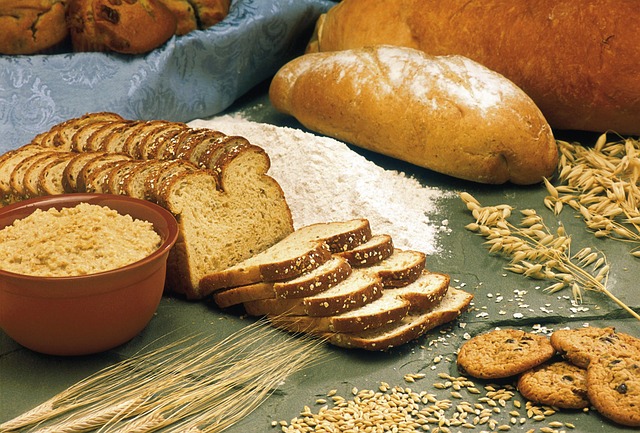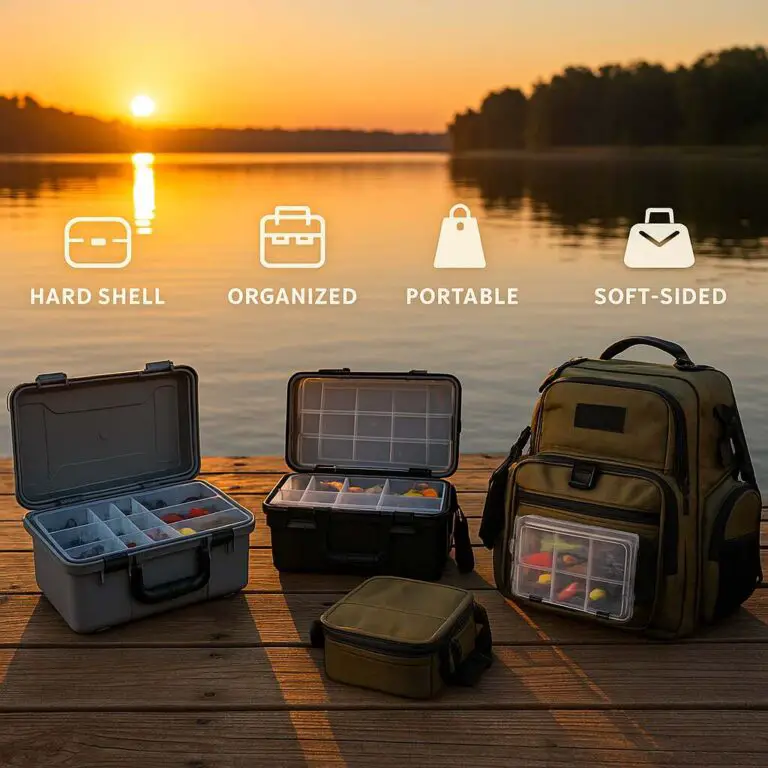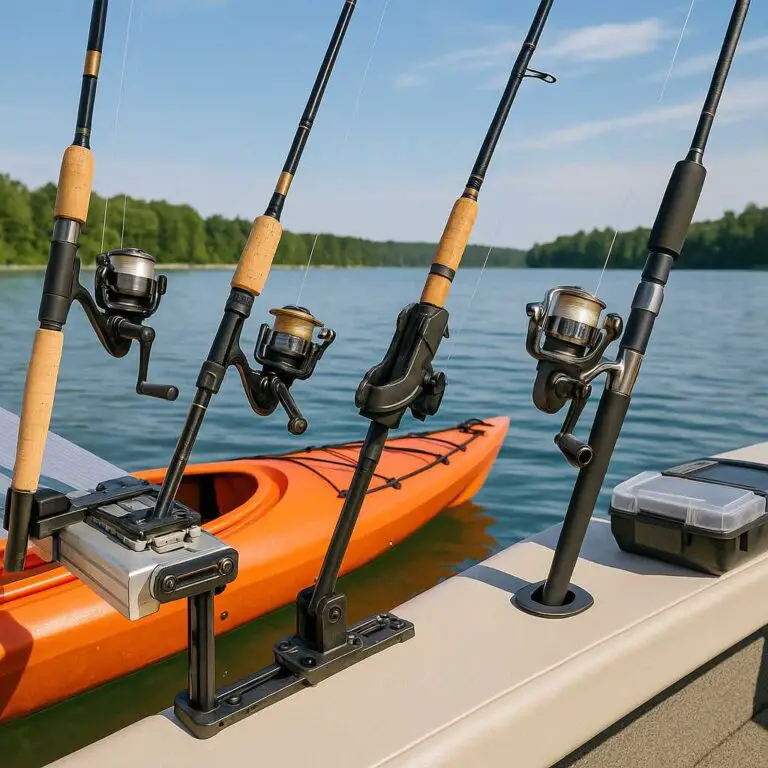Have you ever wondered if you can turn something as simple as bread into effective fishing bait? Well, I’ve been curious about it too. In fact, I recently embarked on a little fishing adventure with a loaf of bread in hand, and let me tell you, the results were quite surprising!
Today, I want to share my experience and delve into the question: Can you use bread as fishing bait? I’ll explore the ins and outs of using bread as bait, covering everything from different techniques to targeting specific fish species. So, grab your fishing gear and get ready for an exciting journey into the world of bread fishing bait!
Understanding the Attraction of Bread as Fishing Bait
When it comes to fishing bait, we often think of live worms, minnows, or fancy artificial lures. But what if I told you that a humble slice of bread could be just as effective, if not more so? Let’s explore why bread is such an attractive choice for anglers like us.
Accessibility and Affordability: One of the biggest advantages of using bread as fishing bait is its accessibility. It’s a staple item found in almost every kitchen around the world. So, if you suddenly get the urge to go fishing and find yourself without traditional bait, chances are you’ll have some bread on hand. Plus, compared to specialized bait options, bread is incredibly affordable, making it a cost-effective choice.
Versatility: Another fantastic aspect of bread is its versatility. Whether you have fresh white bread, whole wheat bread, or even flavored varieties, they can all be used as bait. This versatility allows you to experiment and find what works best for your target fish species.
Texture and Smell: Believe it or not, bread possesses qualities that can mimic natural food sources for fish. Its soft and doughy texture can resemble insects, larvae, or small bits of decaying matter that fish often feed on. Additionally, bread has a distinctive smell that can pique a fish’s curiosity, especially if it resembles food they commonly consume.
Ease of Use: Using bread as fishing bait is incredibly simple. You don’t need any special skills or complicated setups. Just tear off a small piece, mold it onto your hook, and you’re good to go. It’s a hassle-free option, perfect for beginners or those looking for a quick and convenient bait solution.
While bread may not be the traditional choice for fishing bait, its accessibility, versatility, texture, and smell make it an intriguing option to consider. Now that you understand why bread holds such appeal, let’s move on to the various techniques you can use to make the most out of this unexpected bait choice.
Bread Baiting Fishing Techniques
Now that I’ve established why bread can be a promising fishing bait, let’s dive into the two primary techniques you can use to maximize its effectiveness: the floating bread technique and the bread paste technique. Both methods have their advantages, so let’s explore them in detail.
Floating Bread Technique
The floating bread technique is particularly effective for surface-feeding fish that are known to target food on or near the water’s surface. Here’s how you can master this technique:
a) Preparation:
- Start by tearing small pieces or flakes of bread from your loaf. You want the pieces to be bite-sized for the fish you’re targeting.
- Opt for slightly stale bread as it holds its shape better and floats longer.
- Experiment with different types of bread to see which ones work best in your fishing spot. Some fish might prefer white bread, while others may be enticed by whole wheat or flavored options.
b) Casting:
- With your fishing rod in hand, gently cast the bread pieces onto the water’s surface, aiming for areas where you suspect fish may be feeding.
- Spread the pieces out, allowing them to drift naturally. This mimics the behavior of insects or other food sources that fish are accustomed to.
c) Observation and Patience:
- Keep a close eye on your bait as it floats on the water. Watch for any movement or disturbance that indicates fish are approaching.
- Be patient and give the fish time to discover and nibble on the bread. Remember, surface-feeding fish may exhibit cautious behavior, so be prepared for subtle strikes.
Bread Paste Technique
The bread paste technique is ideal for bottom-feeding fish that scavenge for food along the lake or riverbed. This technique allows you to create a sticky and durable bait paste using bread and other ingredients. Follow these steps:
a) Ingredients:
- In a container, break down slices of bread into small pieces and add water gradually. Mix them together until you achieve a sticky consistency.
- To enhance the effectiveness of the bread paste, consider incorporating additional ingredients such as cheese, canned corn, or even some fish attractants available on the market. These additions can provide extra scent and taste appeal.
b) Molding:
- Take small portions of the bread paste and mold it around your fishing hook, covering it completely.
- Ensure the paste adheres firmly to the hook to prevent it from falling off when cast into the water.
c) Presentation:
- Once your hook is covered with the bread paste, cast it into the water near the bottom where bottom-feeding fish are likely to be.
- Allow the bait to settle and attract fish by dispersing enticing scents and flavors.
By mastering the floating bread and bread paste techniques, you’ll have a versatile set of skills to tackle a variety of fish species. So, whether you’re aiming for surface-feeding fish or those lurking near the bottom, bread bait can be your secret weapon.
In the next section, I’ll explore specific fish species that can be targeted using bread bait, both in freshwater and saltwater environments. Stay tuned!
Targeting Fish Species with Bread Bait
Now that I’ve covered the bread-baiting techniques, let’s explore some specific fish species that can be targeted using bread as bait. Whether you’re fishing in freshwater or saltwater, bread can be surprisingly effective in attracting a wide range of fish. Let’s take a look at some popular species:
Common Freshwater Fish Species:
- a) Carp: Carps are notorious bottom feeders and can readily be enticed by bread bait. Mold a ball of bread paste around your hook, cast it near their feeding areas, and wait for the bite.
- b) Catfish: Catfish are known for their keen sense of smell, and bread bait can be irresistible to them. Use bread paste on your hook, and consider adding strong-smelling ingredients like cheese or canned corn to enhance the bait’s effectiveness.
- c) Bluegill: Bluegill, a popular panfish, can often be found near the water’s surface. Use the floating bread technique to tempt them. Small flakes or balls of bread cast on the surface should grab their attention.
- d) Trout: Trout are known to feed on insects and small creatures floating on the water’s surface. Floating bread can mimic these natural food sources and entice them to strike.
Remember, different fish species have varying preferences and habits. Experimentation is key to discovering what works best in your fishing spot. Adjust your techniques and presentation to match the behavior and preferences of the fish you’re targeting.
Saltwater Fish Species:
Bread bait can also be used for saltwater fishing, attracting a range of species. Here are a few examples:
- a) Redfish: Redfish are often found in coastal areas and estuaries. They are opportunistic feeders and can be enticed by floating bread or bread paste presented near the bottom.
- b) Sheepshead: Sheepsheads have strong teeth designed to crush shells and crustaceans. Use bread paste to mold around your hook, mimicking their preferred food sources.
- c) Snapper: Snappers are aggressive feeders and will strike at a variety of baits. Use floating bread balls or bread paste to attract their attention and trigger a bite.
It’s important to note that saltwater conditions can present additional challenges, such as stronger currents and different fish behavior. Adapt your bread-baiting techniques to suit the specific saltwater environment you’re fishing in.
Remember, while bread can be effective for many fish species, it’s always a good idea to research and understand the preferences and regulations specific to your location. Now that you know which fish species can be targeted using bread as bait, let’s move on to additional tips and considerations to further enhance your bread fishing adventures.
Additional Tips and Considerations
As you embark on your bread fishing adventures, here are 6 additional tips and considerations:
- Experimentation and Adaptation: Don’t be afraid to try different types of bread, flavors, and additives to enhance your bait’s effectiveness. Some fish may prefer a specific type of bread or be enticed by additional scents. Be open to adapting your techniques based on the fish’s response and the conditions you’re fishing in.
- Observe and Learn: Pay attention to the fish’s behavior and feeding patterns. Take note of where they are congregating, how they respond to different presentations, and the best times of day for feeding. Observation will help you fine-tune your approach and increase your chances of success.
- Local Regulations and Environmental Considerations: Always research and comply with local fishing regulations. While bread is generally accepted as bait, there may be specific rules or restrictions in your area. Additionally, be mindful of the environment. Avoid excessive bait usage that could lead to littering, and dispose of any leftover bread responsibly.
- Stay Mindful of Hook Size: Consider the size of the fish you’re targeting and choose an appropriate hook size. Using hooks that are too large may result in missed strikes or fish not taking the bait properly. Adjust your hook size accordingly to increase your chances of hooking the fish successfully.
- Practice Patience: Fishing requires patience and perseverance. While bread bait can be effective, it may take some time for fish to discover and bite. Be patient, observe the water, and enjoy the experience. Sometimes, the wait is part of the thrill!
- Share and Learn from Others: Join fishing communities, forums, or social media groups where you can share your experiences and learn from fellow anglers. You’ll find a wealth of knowledge, tips, and stories that can further enhance your bread fishing endeavors.
Conclusion
Using bread as fishing bait may seem unconventional, but its accessibility, versatility, and potential to attract a variety of fish species make it a fascinating option to explore. From the floating bread technique to the bread paste technique, you now have a range of techniques to try. Adapt and experiment with different bread types, flavors, and additives to find what works best for you.
As you venture out to the waters, remember to be mindful of local regulations, respect the environment, and practice responsible fishing. Share your experiences and learn from others to continually improve your skills.
Remember, fishing is not just about catching fish—it’s about the joy of being outdoors, the connection with nature, and the thrill of the chase. So, embrace the adventure, have fun, and make lasting memories along the way. So, grab that loaf of bread, head to your favorite fishing spot, and see what surprises await you. Happy fishing!
Read next: You might also like to know the effectiveness of hot dogs as fishing bait.








